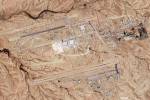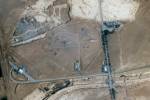Cable flaws suspected at Rio
County inspectors have found two spots in a tower at the Rio Hotel where they suspect that structurally important cables buried in concrete were damaged or severed during recent remodeling. Two affected guest rooms have been closed until a licensed engineer studies each site and prescribes a repair.
"What we saw was potential cable damage," said Stacey Welling, a county spokeswoman. The county is waiting for results of the study by the Henderson engineering firm of Culp & Tanner, selected by Harrah's Entertainment, which owns the Rio.
The two suspicious locations were found Oct. 11, but inspectors did not send the associated paperwork in a timely fashion to Welling, who briefs the media. She did not know why. The two rooms are on different floors.
Setting the two guest rooms off limits seems a reasonable safeguard to take until the engineer's recommended repair is taken, according to UNLV professor Neil Opfer, who teaches construction management. Opfer is not a party to the investigation at the Rio, but is familiar with post-tension cabling, a method of construction that is used throughout the Las Vegas Valley, in skyscrapers as well as one-story homes.
He did not think that two potentially damaged cables threaten the overall integrity of a large commercial highrise. "With one post-tension cable, you damage that cable, you've got enough redundancy with the post-tension cables beside it."
Engineers who design post-tension cable systems create a "safety factor" for each building that exceeds minimum demands, according to Opfer and Luis Reyes.
"It's all engineered and designed based on the weight of the building, the levels of the structure, seismic conditions, all that," said Reyes, who is the founder and president of Southwest Post-Tension Systems, a cable manufacturing plant in North Las Vegas. Last year, the plant "ran," or produced, about 54 million feet of cable for post-tensioning.
But if a cable has been damaged, there is a risk of sudden break. The rupture of a cable, which is actually multiple metal strands wrapped around a metal core, could cause it to slice up out of hard concrete with great force. When a cable snaps on a job site, it can catapult a huge chunk of concrete hundreds of feet away, according to Opfer and other construction experts.
Post-tension cables are laid in a careful grid within wet concrete, in order to strengthen a slab. After a specified time lapse for the concrete to harden, the cables are tightened to a specified level of tension, and "locked."
Think of a sagging shelf in a bookcase. The top surface of the shelf is pushed together, while the bottom surface of that same shelf is being pulled apart. You can cure the sagging either by substituting a thicker shelf, which is an analogy for a thicker concrete slab, or you can strengthen the shelf by running metal rods through the shelf, from left to right. That is an analogy for rebar reinforcement. Or, run metal cables through the shelf, attach them to the sides of the bookcase and then pull them taut. That's the analogy for post-tension cabling.
At the Rio, cables could have been nicked or severed when remodel workers drilled holes in the floor slabs to create openings for wiring or plumbing to pass through. The task is tricky.
Before drilling, contractors use original building plans to locate cables. They can also X-ray the slab to detect cable locations.
An outside contractor X-rayed empty guest floors of the Rio to guide the drilling of holes during the remodel of the Ipanema tower. But remodel workers interviewed by the Review-Journal said they did the core drilling, not a specialized contractor.
The workers were hired for the job either through a Teamsters local, or Local 501 of the International Union of Operating Engineers, whose members normally do skilled building maintenance, not large-scale remodeling.
One man has said he was present when at least two, maybe three, cables were snapped. An engineer's fix would entail stabilizing and strengthening each snapped cable.
Some Las Vegas homes have post-tension cabling because their concrete foundations had to be located on soils that are expansive, which means the soils swell when wet. Other home builders here use the system on stable soil anyway, because it's "faster, cheaper ... and gives a greater level of comfortability" that the foundation will remain in one unit, Reyes said.
Contact reporter Joan Whitely at jwhitely@reviewjournal.com or (702) 383-026.























